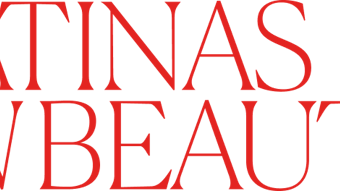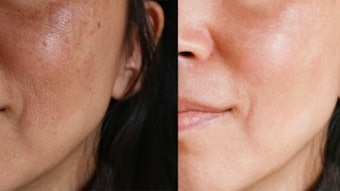- Latin America continues to be a key region for growth for the beauty industry, with Brazil and Mexico out front in terms of sales and industry clout.
- One of the biggest challenges in the Latin American beauty industry is the nature of the regulatory environment in several of the countries, but many local beauty associations and governments are working to make the processes and application of regulations smoother.
- Several Latin American countries are banding together in partnerships to help strengthen and further grow the beauty industry in Latin America.
Latin America is one of the global regions enjoying the highest all-round growth in beauty sales, with annual sales of approximately $80 billion in 2012. But perhaps more importantly, the beauty market in Latin America also seems to have a clear objective: to become the beauty industry’s second biggest market after the Asia-Pacific region.
“Emerging nations are showing some of the highest figures for growth, and Latin America is the region with the second highest,” Jaime Concha Prada, president of the Council of Associations of Latin American Cosmetics Industry (CASIC), told the news agency EFE. Concha Prada, who is also executive director of the cosmetic industry chamber within Colombia’s national business association (ANDI), pointed out the cosmetics sector in Latin America had grown 314% in the last decade, a rate of growth bettered only by Eastern Europe.
While the market appears prosperous, there are still threats, however, including those from unfair competition, smuggling and counterfeiting. There are also shifting attitudes and alliances in Latin America impacting the beauty products available there.
Brazil, Mexico Lead the Pack
In Brazil, the numbers keep on rising as far as sales of cosmetics and perfumes are concerned. According to a report from the Brazilian Association of the Cosmetic, Toiletry and Fragrance Industry (ABIHPEC), the country has seen a compound annual growth rate of 10% over the last 17 years, adjusted for inflation. And sales rose from $2.2 billion in 1996 to more than $15.4 billion in 2012.
The ABIHPEC report attributes this sustained level of growth down to several factors. Brazilian women have increased their presence in the workplace in the last two decades, while the use of new technologies and the consequent increase in productivity has enabled the beauty sector to keep price increases below those of the general economic price indexes. Also, the beauty market is in constant flux, new product launches are an everyday event and life expectancy has increased, leading to a greater demand for products that can combat the signs of aging.
According to data supplied by Euromonitor International, Brazil became the largest perfume market in the world in 2010, overtaking the United States. While U.S. sales held firm at $5.3 billion, revenue in Brazil jumped from $4.5 billion in 2009 to $6 billion in 2010, an increase of 33%.
Product launches also have seen great leaps in Brazil. Coty, for example, announced the launch of its Adidas range with special products to celebrate Brazil’s status as host nation for the World Cup in 2014.
ABIHPEC does recognize the regulatory challenges for Brazil can be daunting. However, “The main challenge is to ensure that the sector retains the position it has achieved. Today, we are the third biggest market in the world for personal care products, and our aim is to improve our position and overtake the current number two, [which is] Japan,” an ABIHPEC statement noted.
In Mexico, CANIPEC, the Mexican personal care industry’s national chamber and association, noted there are 64 companies operating in the market, which is reportedly worth approximately $14 billion. Additionally, the industry has attracted $6.2 billion in direct foreign investment in the last decade. And CANIPEC predicts growth of 7–8% for the beauty market in Mexico in 2013 (the value of the market was $9.975 million in 2012, which represented 0.87% of the country’s total GDP.
As for opportunities to strengthen the industry, the chamber informed GCI it intends to boost communication to ensure the beauty, cosmetics and toiletries industry is considered a strategic sector in Mexico when it comes to negotiating international trade agreements. CANIPEC also intends to strengthen guidelines on the self-regulation of marketing material in an attempt to eradicate misleading advertisements, as well as work toward updating the regulatory framework for beauty and personal care products to bring them in line with international standards—benefiting consumer well-being as well as strengthening commerce opportunities.
Mexico has attracted big investments from international beauty companies recently, with L’Oréal opening its largest hair color production plant (in terms of production capacity) in Villa de Reyes, which is in the Mexican state of San Luis Potosí. The new facility represents an investment of $100 million from L’Oréal, and it doubles the company’s production capacity in Mexico, which is used to supply both Latin America and North America. It also created approximately 1,200 jobs for the area.
In line with the company’s ambition to reach one billion new consumers in the next 10 years, the new factory is part of L’Oréal’s global strategy toward greater specialization of its production by business segment. The Villa de Reyes plant began operations in April 2012 with a targeted production of more than 100 million units in 2013 and more than 210 million in 2014, for a total production of 400 million units in Mexico (including the company’s Mexico City plant). It currently manufactures hair color products for L’Oréal Paris, Garnier, SoftSheen Carson and, added in 2013, for L’Oréal Professionnel. Mexico is clearly a key element for L’Oréal’s global plan moving forward.
And the opportunities for beauty companies in Brazil and Mexico should be on the rise, as the countries signed a free trade agreement at the start of the 2013. The Mexican chamber explained the accord seeks to broaden the existing Economic Complementation Agreement between the two countries, with the aim of increasing revenue and employment.
Chile, Argentina On the Upswing
Chile’s numbers also show an upward trend. The first half of 2013 saw beauty retail value sales of $1.4 billion, according to the Cosmetics Industry Chamber of Chile (CIC), which represents 82.1% of the market. Growth was 8.5% over the same period in 2012, representing 46% of total annual sales. And bearing in mind that the sector’s highest sales figures are typically reported in the fourth quarter, it is estimated that 2013 will close with growth of almost 9% for Chile’s beauty industry.
CIC executive president Álvaro Márquez, told GCI the beauty market in Chile had closed 2012 with a retail value of $2.8 billion and that he expected it to top $3 billion this year. The industry accounts for 1.4% of Chile’s GDP, with annual per capital consumption of $160, the second highest in the region after Brazil.
The Chilean chamber also stressed that it had been working with the national government to accelerate its compliance with international regulations. Márquez highlighted Chile’s participation in the Pacific Alliance “in which the four cosmetic chambers involved in the alliance—those of Colombia, Chile, Mexico and Peru—have a complete consensus. As the official position of the cosmetics industry, we are calling for, among other things, the elimination of prior authorizations, a robust system of monitoring in the market based on post-authorization controls, the elimination of certificates of free sale and batch to batch certificates, a harmonized labeling scheme, standardization of ingredients, recognition of best practice, and a harmonized definition of cosmetics and of the permissible variations in soap contents.”
In Argentina, the big investment news came from Unilever, with Argentine president Cristina Fernández de Kirchner herself inaugurating the multinational’s new line of aerosol deodorants in the town of Tortuguitas, in the province of Buenos Aires. The company invested $1.4 billion in what is the largest aerosol deodorant factory in the world, offering a production capacity of 540 million aerosols a year.
This location makes sense for Unilever, as Argentina has the highest per capita consumption of aerosols in Latin America, according to data from the Chilean aerosol chamber. Reportedly, the average person uses 10 aerosols every year compared to 4.6, 3.3 and 2.7, respectively, in Chile, Uruguay and Mexico.
Additionally, Unilever’s launch of Vasenol, a new brand that will be sold only in pharmacies and perfume retailers, demonstrates the company’s continued confidence in the Argentine market. The company is clearly targeting the market for big things.
Colombia, Ecuador Focus on Regulation
It has been a difficult year for the beauty industry in Colombia due to the international financial crisis, but the sector began to a pick up in the second half of 2013.
“We expect increases in production of close to 10%, principally on the back of exports, which have grown 20%,” CASIC president Concha Prada told GCI. “The internal market saw growth of around 3.1% in the first half, but we hope to close the year with internal growth of about 6%.” The numbers are still good for the country, however. In 2012, the beauty market stood at $3.98 billion, accounting for 0.6% of Colombia’s GDP.
A new division for the administration of cosmetics and toiletries within Invima, the Colombian national institute for food and drug monitoring, was created in 2012. “Until last year, cosmetics in Colombia were monitored as a subdivision of medicines, and manufacturers often faced the same demands as they would for medicines. The staff at the new administration have been certified by SGS as ISO 22716 inspectors, which has harmonized the inspection visits,” Concha Prada said. And looking ahead to next year, Colombia is aiming for all private companies to provide social responsibility reports.
Also working on its regulatory efforts, the Ecuadorian Cosmetics, Fragrances and Personal Care Association informed GCI the beauty sector in Ecuador had seen sustained annual growth of about 10% for the last four years, and is expected to achieve 12% growth for 2013. Reportedly, the country’s beauty market is worth more than $100 million, coming in at 1.6% of Ecuador’s GDP.
While ongoing advances in regulation have been significant and helped drive this growth, “During the second half of 2012, the regulatory body in charge of registrations and notifications was closed due to claims of inefficiency and bureaucracy,” explained María Fernanda León, executive director of the Ecuadoran cosmetics association. “In its place, a new safety control agency, ARCSA, is now responsible for the regulatory process and for shifting controls from pre-commercialization to post-registration. This is an international tendency that the industry is aiming for with the objective of ensuring the safety and quality of products that reach the consumer.”
León also highlighted the fact that, in 2012, compulsory sanitary notifications were granted within 24 hours. In 2013, a “one-window” system was inaugurated, reducing the amount of paperwork involved in registering products and obtaining sanitary notifications, which can now be done online.
The system is to be extended to cover certificates of free sale within the Community of Andean Nations (CAN), which create a certificate for products entering the community from third-party nations.
The spokesperson for the Ecuadorean chamber also stressed that the country’s president Rafael Correa had met with those in the beauty and cosmetic sector and was in agreement with the industry’s line. “He was the direct leader of the changes that have been achieved,” León said.
Cristina Kroll is a business journalist specializing in the beauty sector and living in Buenos Aires, Argentina. She has written for the main Argentine magazines related to the beauty business, and was a correspondent for French magazine Beauty Business News.










